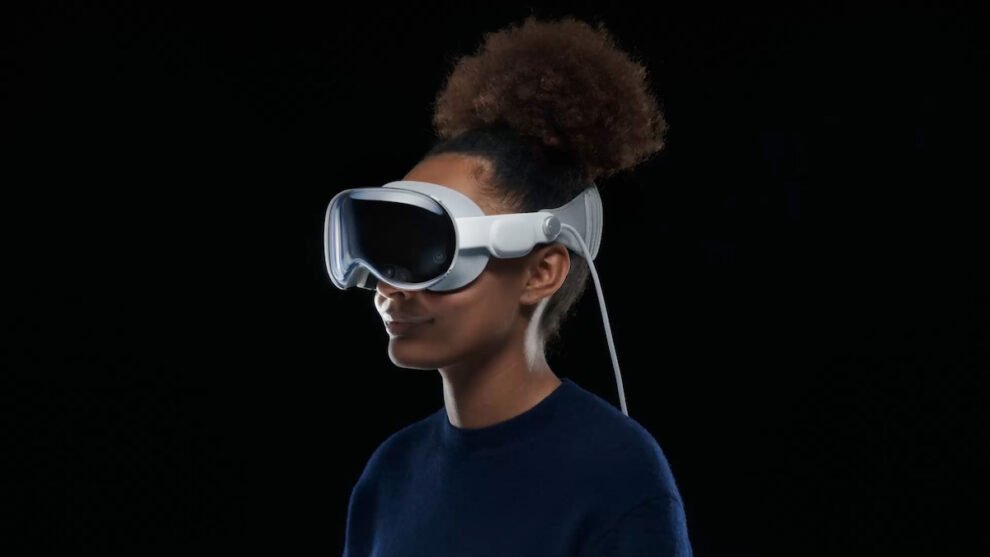A team of cybersecurity researchers has recently unveiled a unique vulnerability that could potentially expose your most sensitive information – your passwords – to malicious actors. The attack targets Apple’s Vision Pro headset, exploiting its eye-tracking technology to infer what you’re typing, effectively turning the device into a surveillance tool. This alarming discovery highlights the potential risks associated with the increasing integration of biometric data and advanced technologies in our daily lives.
This side-channel attack, named ‘EyeSpy’, leverages the precise eye-tracking capabilities of Vision Pro to monitor your eye movements as you interact with virtual keyboards. By meticulously analyzing these movements, attackers can deduce the keys you’re looking at, and by extension, the characters you’re inputting. While this attack necessitates close physical proximity to the victim and specialized equipment, it underscores the critical need for enhanced security measures in the rapidly evolving landscape of spatial computing.
Decoding ‘EyeSpy’: The Mechanics of the Attack
EyeSpy operates on the premise that our eye movements closely correlate with our cognitive processes. When we type on a virtual keyboard, our gaze instinctively follows the keys we intend to press. The Vision Pro, equipped with high-resolution cameras and sophisticated algorithms, tracks these subtle eye movements with remarkable accuracy. Attackers can exploit this data, using machine learning models to translate gaze patterns into keystrokes.
The researchers demonstrated the efficacy of EyeSpy in a controlled environment, achieving an accuracy rate of up to 72% in predicting passwords. While this might not seem alarmingly high, it’s crucial to remember that passwords often follow predictable patterns. Attackers can leverage this knowledge, combining it with the inferred keystrokes, to significantly increase their chances of success.
Real-World Implications: More Than Just Passwords
While the immediate concern is password theft, the implications of EyeSpy extend far beyond. This attack highlights the potential for malicious actors to exploit biometric data in unforeseen ways. As we increasingly rely on technologies like facial recognition and eye-tracking, we inadvertently create new avenues for surveillance and data breaches.
Imagine a scenario where an attacker uses EyeSpy to monitor your interactions with sensitive documents, emails, or even private conversations. The potential for privacy violations is immense. Moreover, EyeSpy could be used to target specific individuals, such as high-profile executives or government officials, making it a potent tool for espionage.
My Personal Take on EyeSpy
As someone deeply interested in the intersection of technology and security, the discovery of EyeSpy has been both fascinating and concerning. It serves as a stark reminder that even the most advanced technologies can have unforeseen vulnerabilities.
In my view, EyeSpy underscores the critical need for a multi-layered approach to security. We can’t solely rely on passwords or biometric data to protect our sensitive information. We need to implement robust encryption, multi-factor authentication, and other safeguards to mitigate the risks posed by emerging threats like EyeSpy.
Protecting Yourself: Mitigating the Risks
While Apple is yet to release an official patch for EyeSpy, there are steps you can take to protect yourself:
- Be mindful of your surroundings: Avoid using Vision Pro in public places or around untrusted individuals.
- Use strong, unique passwords: Avoid using easily guessable passwords or reusing passwords across multiple accounts.
- Enable two-factor authentication: This adds an extra layer of security to your accounts.
- Stay informed: Keep abreast of the latest security news and updates.
The Future of Security in the Age of Spatial Computing
EyeSpy is a wake-up call for the tech industry. As we venture into the era of spatial computing, we need to prioritize security from the outset. This means designing devices and software with privacy and security in mind, conducting thorough vulnerability assessments, and proactively addressing potential threats.
We also need to educate users about the risks associated with emerging technologies. By fostering a culture of security awareness, we can empower individuals to make informed decisions about their digital lives.
EyeSpy is a stark reminder that the future of technology is not without its challenges. As we embrace the possibilities of spatial computing, we must also be vigilant about the potential risks. By understanding these risks and taking proactive steps to mitigate them, we can ensure that our digital future is both innovative and secure.

















Add Comment